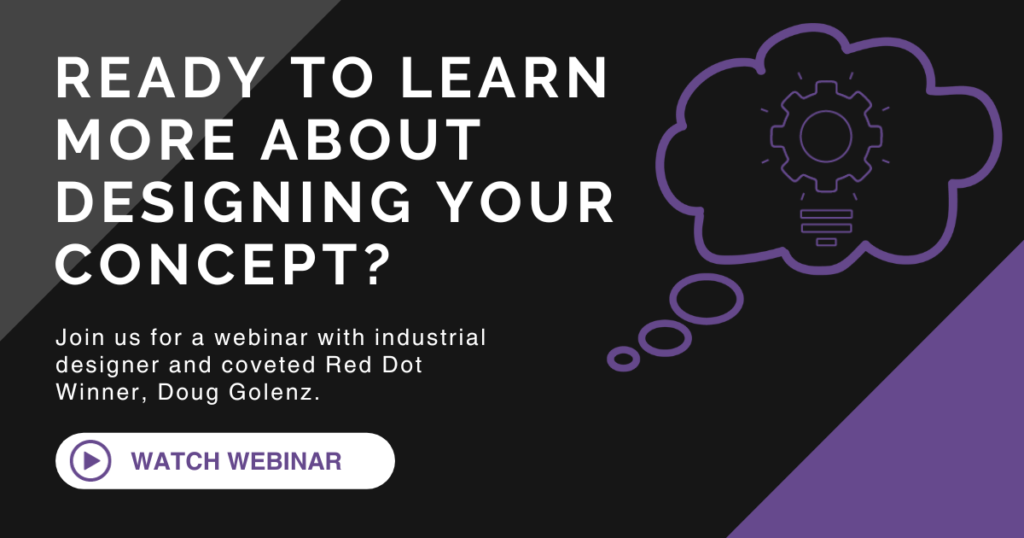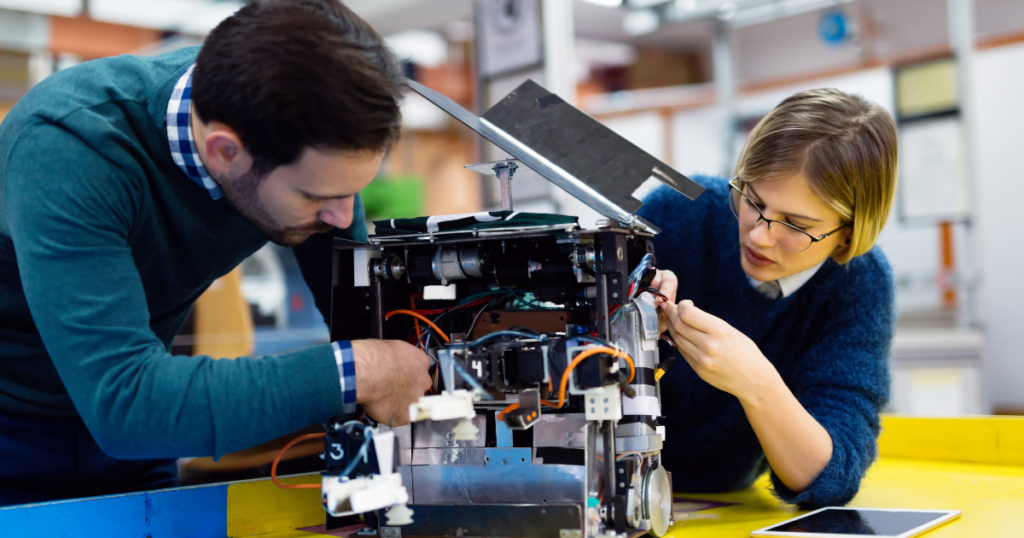With running shoes tied, carb loading done the night before, and a hydration plan in mind, our runner is at the starting line ready for the horn to begin the race. Feelings of excitement combined with some anxiety about the unknown journey ahead are fueled by energy imagining the finish line in the distance.
Perhaps you find yourself in a similar place with an idea in your head. You’ve found a new or interesting way to solve a problem that is not available in the marketplace. You are considering the hardware development journey and looking forward to the finish line: making a profit. The first phase of product development is the most obvious – you have an idea and want to get a concept developed for others to see your vision. This may be the easiest phase of producing a new product.
Practical Considerations
When working through a concept, people can be enraptured by the dream of their immense success, but it is important to be realistic. Do you know how much money is needed to bring this product to market? Do you know how long it will take? Before plunging headlong into product development and spending significant resources, take some time to consider the following questions:
- Is this new product something that the market can’t live without? Is the world worse for not having this product?
- Is this product something you have experience using? Do you have the knowledge to develop all the features? Or will you need to hire others with specific expertise?
- What are your end goals: Do you want to license the idea? Or build a company around it? Do you have the skills necessary to market your idea? Do you know how to run a business?
- Are you dedicated to developing it despite the challenges or cost? Do you have the resources necessary to fund development? Or do you have the skillset to pitch to investors?
For any question that you don’t answer “yes”, you may want to evaluate if a “yes” is possible before moving forward to develop your product. No different than a person who hasn’t trained for a marathon should carefully consider their ability to finish the race before lining up at the starting line.

Sketching Out Your Idea
Once you’ve evaluated your dedication to the project and are prepared to face the challenges, let’s take the first step forward in Concept Phase and sketch out your idea.
This first step involves getting the idea out of your head and into the world. It might be a sketch or maybe a modification of a similar product. The founder of what would become Gogo Inflight started by sketching her concept on a cocktail napkin.
A few areas to consider when developing your idea:
- Capture how the concept represents the idea, even if it isn’t perfect
- Identify the key features and approximate appearance
- Consider how it would be used and how the end user would interact with it
When you engage with designers and engineers it is helpful to have some kind of sketch to communicate what you want the product to look like and be able to describe what it should do. As they say, “a picture is worth a thousand words.”

Creating a Model of Your Concept
Once you’ve sketched out what the product looks like and defined some of the features, make a model that shows the basic function or design of your product. This is not the time for perfection as your goal is to communicate your idea and get feedback on it. A note of caution: carefully consider how and when you reveal your idea to others as it can affect your patent filing, which we’ll discuss further in our next blog.
Here are a few ways you can get a model made of your idea:
- Modify an existing product
- Create something new using materials from a home improvement or craft store
- A maker space may have resources to create a prototype of your idea
At Zebulon Solutions, we often develop the mechanical appearance separate from the electrical function. This approach uses financial resources efficiently while communicating the vision and features of the future product. Regardless of your approach, the model should communicate your idea in a straightforward way that helps others see your vision.

Get Comfortable with Iterations
The first model you design will evolve as you learn about it. As features and functions are explored, the design will be revised many times. This iterative process of:
design > BUILD > test > analyze
will be repeated throughout the life of the product. Each iteration teaches something about the product that wasn’t known previously. In this phase of development, iterations are your friend. They are the least expensive to make and don’t have cascade effects on interfacing components since the detail of the design hasn’t been completed, yet. At Zebulon Solutions, we encourage our customers to iterate early and often when developing the concept.
Make a List of Product Requirements
One area that many first-time inventors overlook is the necessity to create a detailed list of product requirements. It is typically easy to describe a few of the features of the product, but a list of requirements is a more detailed endeavor.
Like a marathon has a clear ending at 26.2 miles from the starting line, the product requirements define when a product is finished. This list guides what testing needs to be completed during the development process and it creates a reference when faced with design decisions down the road. The Product Requirements Document (PRD) also communicates the scope of the product to others as you build your team.
The following questions can help create an initial PRD:
- What must the product do? What shouldn’t it do?
- What would be attractive features for the product to have?
- What conditions does the product need to operate under?
- Who will be using the product? Who won’t use it?
- What does the product need to look like? Is there a size or weight constraint?
There are many other questions to build a full PRD, but this will get you started. Additionally, there are benefits to prioritizing features between what is necessary in the product and what would be nice to have. The PRD is a living document that should be revised through the end of the “Proof of Concept” phase.

Reaching Your First Milestone
The end of this phase approaches when you’ve developed a concept that conveys the primary features, functions, and appearance of your idea. When you start considering how you will protect your intellectual property, you are beginning the next phase. The concept you’ve developed here will serve as a reference point for future development.
Much like our runner has completed the first mile, there is a long way to go to the finish line. There is still plenty of energy reserves to draw from and internal motivation for what lies ahead. One down, twenty-five to go.
If you are prepared for the journey, keep moving forward. Join us for our next blog where we will look at ways to protect your idea and what to keep in mind if you decide to file a patent.
